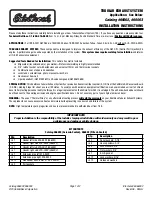
26
DISCONNECTING THE "MODE
¢
2"
CHARGING CABLE
During the charging procedure the cable is
automatically locked on the charging port in
the car.
To complete the charging, proceed as
follows:
unlock the doors of the car allowing the
charging cable to unlock
disconnect the cable from the vehicle
charging port by grasping the handle of
the charging connector and avoiding to
pull the cable directly
disconnect the cable from the charging
port fig. 35
reposition the protective cover of the
charging port
close the charging flap, making sure it
locks properly
35 J0A6001E
roll up the charging cable correctly,
repositioning the protective cover
correctly on the charging connector
(where provided). When rolling up,
take care not to damage the cable.
Then place the cable, together with the
charging kit, inside the housing located
inside the boot
WARNING Before disconnecting the
charging connector, make sure that the
doors are unlocked. If the door is locked,
the charging connector locking system does
not allow disconnection.
ATTENTION
31)
Incorrect setting of the charge current
intensity can overload or overheat the
mains power supply of the domestic
power socket. Fire hazard. Before
charging from other domestic sockets,
adjust the charge current intensity to the
mains. If you do not know the mains, set
to the lowest level. Never use extension
cords for charging.
32)
Incorrect connection between
connector and charging terminals
constitutes a fire hazard!
33)
During normal operation, the domestic
power socket can overheat. In the case
of extreme overheating, the charge is
interrupted and the warning LED on the
front of the cable control unit will turn on.
Refer to the table in the "Charge system
failure" paragraph in the "Power sources
that can be used" chapter of the online
Owner Handbook.
34)
The "Mode 2" charging cable must be
connected to a dedicated circuit that is
not shared with other devices that absorb
electrical energy.
35)
Do not insert fingers or objects in the
cable charging connector.
36)
The high-voltage battery must only
be charged through approved, earthed
domestic sockets or from a public
charging station using the charging cable
supplied separately as an option by FCA
(” Mode 3“ charging cable).
37)
Keep the charging flap closed when
the charging port is not in use.
WARNING
3)
Do not charge if the external
temperature is -30°C or lower, as charging
is likely to take longer and the charging
device may be damaged.
4)
Do not leave the car or the charging
cable in areas where the external
temperature is below -40°C as they may
be damaged.
5)
In cold temperatures, the charging
cable may become stiff. Therefore, be
careful not to apply excessive force to the
charging cable as it may be damaged.
6)
Do not use personal generators to
charge the high-voltage battery. This may
cause fluctuations in charging and the
voltage may be insufficient, resulting in
damage to the car system.
Summary of Contents for RENEGADE 2023
Page 2: ......
















































